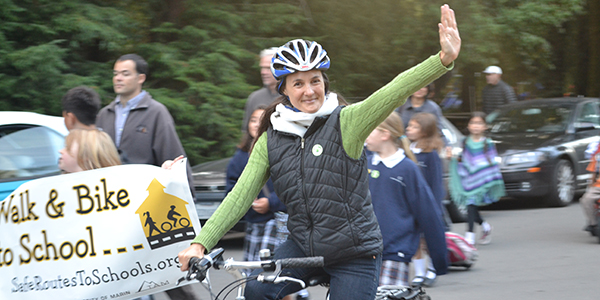Look both ways. Wear your helmet. We’ve all heard these maxims about safety, and probably shared them a time or two.
Aside from distance to school, safety is a leading factor for both adults and children in the decision to participate in physical activity and walk or bike to school (Nasar, 2015; Zhou et al., 2009). However, adopting those individual protective behaviors will not provide an easy solution. This blog post will unpack three reasons why the concept of safety, particularly in the context of safe travel to school, can be challenging to conceptualize and achieve.




 We started growing seeds for our garden over the weekend and as I sat down to write my blog this week I was struck by how working to grow awareness and engagement for Safe Routes to School is similar to the growth of our seedlings.
We started growing seeds for our garden over the weekend and as I sat down to write my blog this week I was struck by how working to grow awareness and engagement for Safe Routes to School is similar to the growth of our seedlings.  The team of policy managers working on the
The team of policy managers working on the  In the US, men's cycling trips surpass women's by at least 2:1. So how do we change that? We start by simply inviting women to participate. On May 13, there were 163 women-focused rides in 14 countries, including the US.
In the US, men's cycling trips surpass women's by at least 2:1. So how do we change that? We start by simply inviting women to participate. On May 13, there were 163 women-focused rides in 14 countries, including the US. Our free 2012 Annual Meeting is taking place on Monday, September 10 from 1-5pm in conjunction with the
Our free 2012 Annual Meeting is taking place on Monday, September 10 from 1-5pm in conjunction with the  As a longtime advocate who loves nothing more than getting kids on bikes, I was inspired and energized by the first North Carolina state network meeting!
As a longtime advocate who loves nothing more than getting kids on bikes, I was inspired and energized by the first North Carolina state network meeting! The state of play on the transportation bill seems to change daily, if not hourly, here in Washington, DC. Last week, negotiations between the House and Senate broke down and it seemed that a transportation extension was likely.
The state of play on the transportation bill seems to change daily, if not hourly, here in Washington, DC. Last week, negotiations between the House and Senate broke down and it seemed that a transportation extension was likely.  What’s New New?
What’s New New? I have written before about how well the state network project is doing. Looking at the first seven months, I am happy to report there has been a real growth spurt as the number of participants increases, as do the contact lists. And the organizers’ skills are getting noticed as are the networks activities. Here are some snapshots:
I have written before about how well the state network project is doing. Looking at the first seven months, I am happy to report there has been a real growth spurt as the number of participants increases, as do the contact lists. And the organizers’ skills are getting noticed as are the networks activities. Here are some snapshots: